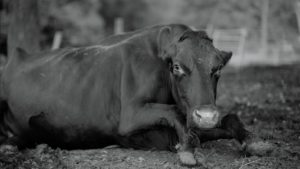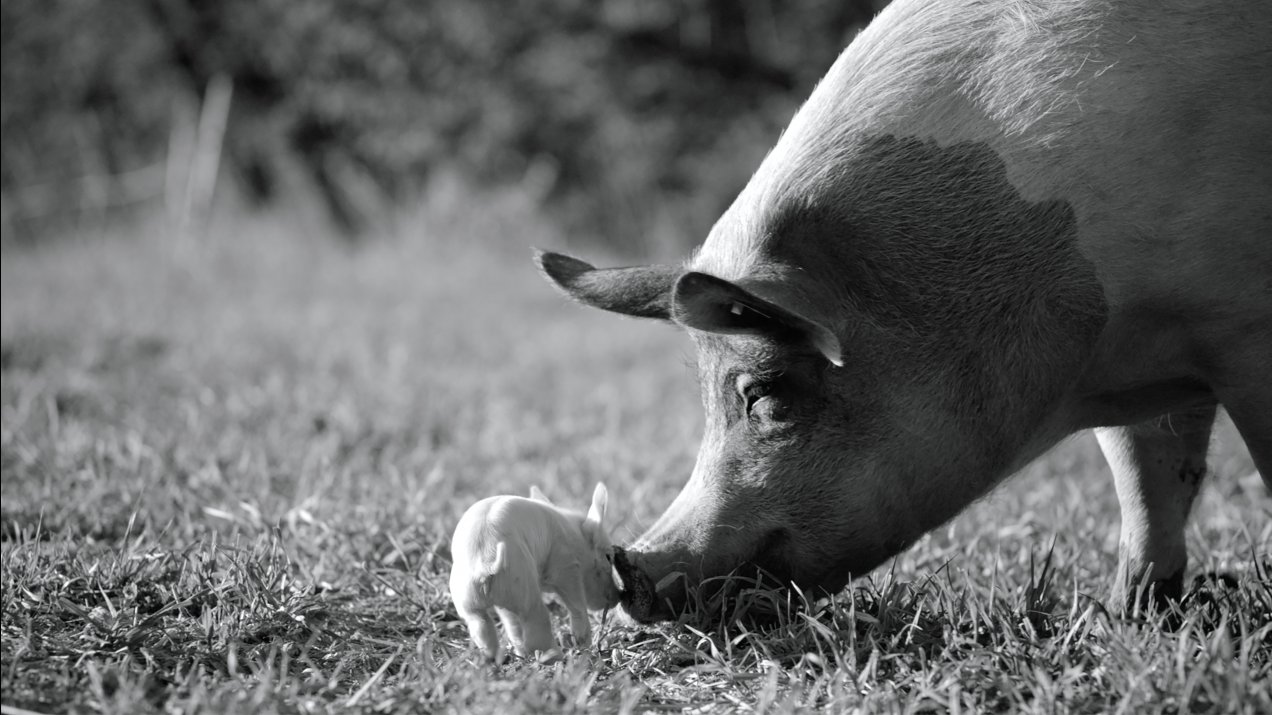Do you remember those five minutes when everybody watched “Planet Earth?” We were so excited about High Definition television that we’d literally watch anything filmed in HDTV. And remember when the thrill of HDTV cooled and we realized it was just a nature show and stopped watching it? Gunda is like a terrifically boring episode of “Planet Earth.” You won’t “oooooh.” You won’t “ahhhh.” You probably won’t even “Meh.”
Not that it matters, but Gunda is a Norwegian film. As not a single line of human dialogue is spoken in the film, it’s origin could be Norwegian, Laotian, or Martian and it wouldn’t make a difference. At all. Nor does it matter that the director is Russian. Imdb says director Viktor Kosakovskiy co-wrote this film with Ainara Vera. Wrote what exactly? This is a nature documentary about life on a farm. There’s no dialogue. The camera rarely moves, and it lingers far longer than is comfortable.
There is no question that baby piglets are cute. They appear slowly in the opening. Momma has just given birth, it seems. Awwwwwww. Ok, how long do you need them to be cute for? 30 seconds? A minute? Five minutes? How about a hour? Would a hour of baby piglets on your screen do it for you? And what did the “written” script say at this structure of the narrative? “Keep shooting until pigs no longer in picture.” It took two people to write that? Excuse me a moment while I get a specialty review consult on this punctuation mark.
I have a serious question here: was this film edited? What percentage of shot film was left on the cutting floor? For normal films I see, I’m guessing the answer is about 80%. I have no idea if this is close to reality…but there are takes and retakes and retakes and script edits and superfluous mess on all shots; 80% to 90% sounds about right. For Gunda, I would bet almost nothing was edited. This film feels like somebody turned a camera on a farm and left for a bathroom break or a smoke break or a “painting your house” break.
Gunda is a well-shot film, for all my complaints about the camera doing nothing. There’s great technical work in the black and white resolution. There’s also a deceptive nature to the way the film is shot. In act II, we see a chicken stalking the underbrush. The camera is aimed at carefully placed claws and the sound of the brush is turned way up. Under a different set of circumstances, you could imagine you were watching a horror film with the claw-footed monster approaching innocent picnickers or something. This tease perhaps makes the film all the more frustrating; after all, I could be watching an actual horror film. The only horror I associate with chickens is salmonella.
stalking the underbrush. The camera is aimed at carefully placed claws and the sound of the brush is turned way up. Under a different set of circumstances, you could imagine you were watching a horror film with the claw-footed monster approaching innocent picnickers or something. This tease perhaps makes the film all the more frustrating; after all, I could be watching an actual horror film. The only horror I associate with chickens is salmonella.
Shot well or no, Gunda feels like a cheat. It feels like some cynical SOB put a camera on the ground, wasted ninety minutes of film, and sold it to the same people awed by Jackson Pollock scribbles. The one true positive I will attribute to Gunda is it was better (slightly) than Le Quattro Volte, another documentary in which the director never yells, “CUT!” I cannot say that I have even the slightest desire to watch either film again … but Gunda was mildly prettier to stare blankly at for ninety minutes. If it comes to recommending how to improve these films, however, I have a suggestion: let the pig operate the camera. Intrigue-wise, it couldn’t possibly be worse.
In the barn there’s both sow and suckling
And twelve more future roasts, cha-ching!
Gosh, that was cute
But there’s more film to shoot
Got a plan for the rest of this thing?
Rated G, 93 Minutes
Director: Viktor Kosakovskiy
Writer: Viktor Kosakovskiy, Ainara Vera
Genre: The one where you change the channel
Type of being most likely to enjoy this film: Lemme put it this way …if you gave the star of this film, a young momma sow, human intelligence and taught her how to watch movies, she’d still probably hoof out of the theater after thirty minutes
Type of being least likely to enjoy this film: The impatient



